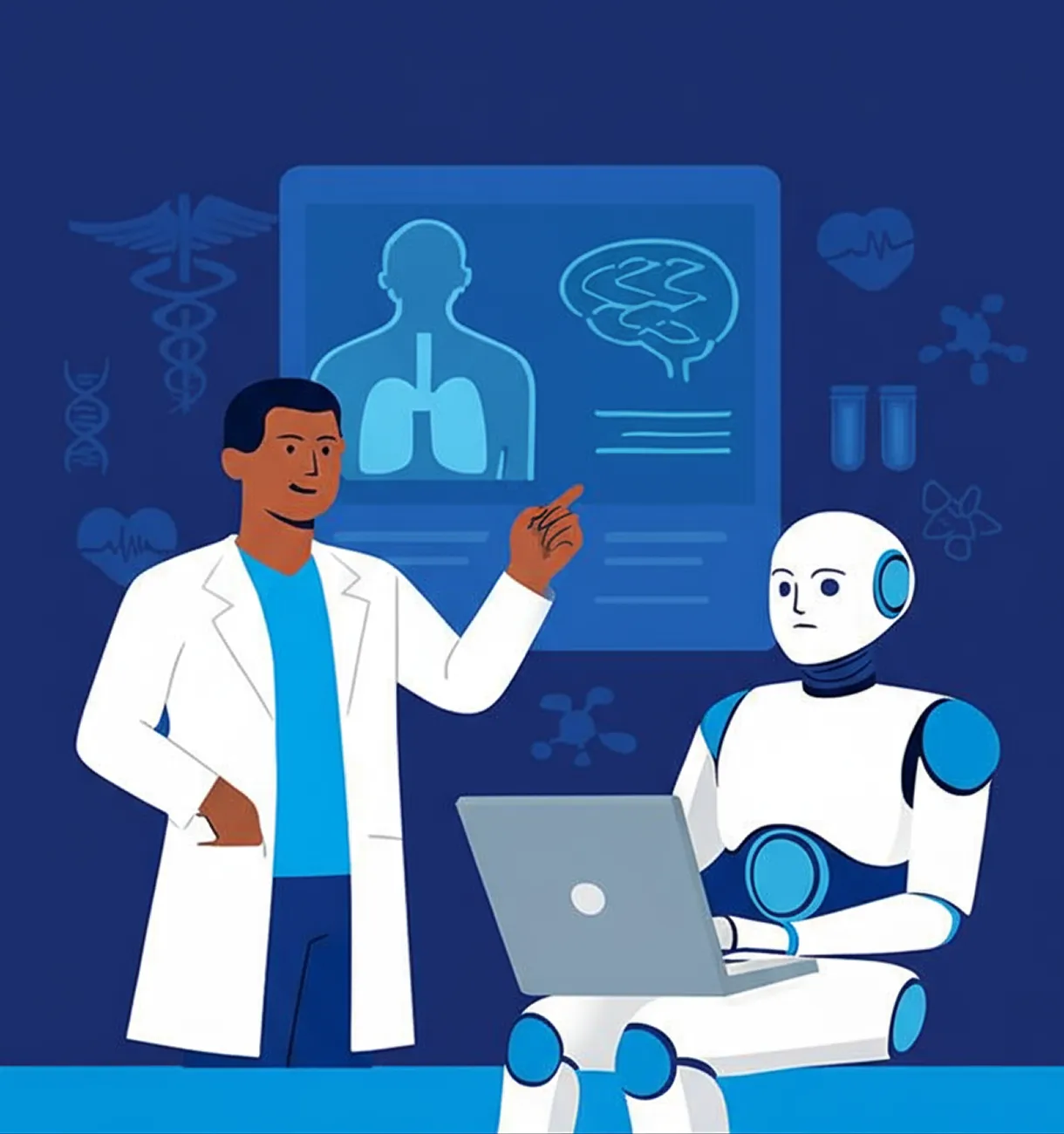Table of Contents
Why Every Life Sciences Company Needs a Data Engineering Partner
- Executive Summary
- Introduction
- The Challenges: how ready is your data for predictive analytics?
- The Solution: finding the right Data Engineering talent
- Inside Space Inventive: Solving Critical Challenges in Life Sciences
- The Concluding Recommendation: Hybrid model of in-house CoE and a niche Data Engineering Partner
- Frequently Asked Questions
- Refrences
Executive Summary
In 2021, a leading pharmaceutical firm failed to detect early adverse-event signals1, which were buried in reports. By the time the issue was centralized, safety interventions were delayed by months, the trial was paused, and market entry costs escalated.
This problem is widespread in Life Science industry. The fragmentation of data and lack of interoperable systems is a widespread challenge across the Life Sciences industry. Yet the fault does not rest solely with these organizations. Life Sciences firms exist at the front lines of global health. Their focus must remain on science and patients, not solely on technology infrastructure.
To enable them, public and private ecosystems must step in. This article explores three structural barriers that prevent AI from scaling effectively in the industry and offers a path forward:
- Why are AI efforts in life sciences stalling at the pilot stage?
- What makes data engineering foundational to predictive healthcare?
- How can organizations scale AI without compromising compliance or control?
The insights are intended for R&D leaders, digital transformation teams, and enterprise decision-makers committed to building resilient, AI-ready infrastructure for the future of healthcare.
If you are looking for niche talent and expertise to translate existing data into scalable Gen-AI models, you search ends. Speak with us!

Introduction
The Life Sciences industry is society’s first line of defense against infectious diseases and emergent biological threats. As global health systems become increasingly interconnected, the industry’s ability to anticipate, respond to, and mitigate health risks is directly tied to its scientific agility and data-driven decision-making. Let us look back at COVID-19. Hans Selye, a pioneering medical teacher had identified three stages of stress reactions, “Triad of Stress”:
-
Alarm reaction
Leading to massive release of adrenaline in a short span of time
-
Resistance
Marked by severely increased cortisol secretion for a longer period of time which often culminated to the third phase
-
Exhaustion
During when adrenaline cortex shrinks
However, stress of the COVID-19 pandemic didn't stop at exhaustion stage. It mutated into long-term domino effect, including mental health disorders, cardiovascular strain, and respiratory conditions, particularly affecting women and ICU survivors.
We live in a post-COVID-19 era, where health is more volatile and unpredictable than before. In the first year of the COVID-19 pandemic, global prevalence of anxiety and depression increased by a massive 25%, according to a scientific brief released by the World Health Organization (WHO)2. And this is just “the tip of an iceberg” affirms Dr Tedros Adhanom Ghebreyesus, WHO Director-General
Hence, most longitudinal clinical studies highlight the need for post-COVID rehabilitation and scientific strategies to improve quality of life. Hence, life Sciences Industry must use the foundational infrastructure that powers intelligent predictive capabilities: data.
The Challenges: how ready is your data for predictive analytics?
Before addressing today’s challenges in Life Sciences, it’s essential to understand the industry’s evolution, leading to a point where predictive analytics is no longer aspirational, but a critical necessity:
19th century
Foundations of Modern Biology & Medicine
- 1859: Charles Darwin publishes On the Origin of Species
- 1865: Gregor Mendel outlines the laws of heredity and genetics
- 1890s: Germ theory validated by Pasteur and Koch
INTERPRETATION
The birth of biological sciences begins to explain disease as a scientific, not spiritual, phenomenon
Early–Mid 20th Century
Rise of Industrialized Pharma
- 1928: Penicillin ushers in antibiotic era.
- 1953: DNA structure discovered by Watson & Crick.
- 1971: State-formalized biomedical research: “War on Cancer”
- 1980: Bayh-Dole Act commercializes biotech innovations
INTERPRETATION
Life sciences evolve from academic research into commercial-industrial ecosystem.
Late 20th Century
Digital Infusion Begins
- 1990–2003: Human Genome Project maps human DNA blueprint.
- 1998: FDA approves the first fully lab-grown biologic (Herceptin).
- Widespread adoption of EHRs and bioinformatics tools
INTERPRETATION
The first seeds of data analytics in healthcare are sown, but data remains fragmented and mostly retrospective.
Early 21st Century
Systems Biology and Real-World Data
- 2007–2015: Rise of patient-generated data via wearables
- 2011: IBM Watson wins Jeopardy!, showcasing potential of AI
- 2015: CRISPR-Cas9 genome editing accelerates precision medicine.
- "Pharma 4.0", integrates IoT, AI, and cloud into pharma supply chains.
INTERPRETATION
The industry transitions from molecule-focused to system-focused paradigms, but data readiness lags.
2020–2023
COVID-19 as a Global Inflection Point
- 2020: Global supply chains collapse under pandemic stress
- 2021–2022: mRNA vaccine platforms deliver at speed, aided by AI
- 2022: WHO reports 25% increase in global mental health disorders
INTERPRETATION
The case for predictive healthcare is no longer theoretical. Urgency is now quantifiable.
2024–Today
The Predictive Imperative in a Hyperconnected World
- 2024: .5+ billion connected IoT medical devices globally1
- Surge in AI/ML deployment across diagnostics and public health
- Rapid adoption of cloud-native platforms like SAP S/4HANA and AWS HealthLake
INTERPRETATION
In a world where diseases can go global in days, predictive capability, built on real-time data from EHRs, genomics, wearables, is both possible and essential.
While it is possible for Life Sciences industry to switch gear into predictive analytics, a critical execution gap persists. According to a survey conducted by McKinsey & Company in 2024, issues related to data quality stand out as the top challenges in scaling data analytics and AI (Figure 1)3:

Organizations struggle to translate proof-of-concept pilots into scalable AI systems. These challenges reflect a lack of mature data architecture: no governed pipelines, no anomaly tracking, no decentralized harmony. As a result, high-potential AI tools underperform or introduce regulatory, clinical, or reputational risks.
The Solution: finding the right Data Engineering talent
A seasoned data-engineering team will use the latest technology to ensure that the quality of data – cornerstone of reliable predictive analytics – is infallible.
At Space Inventive, we build scalable analytics through a five-prong approach:
- Accurate Data Quality : Our data engineers employ sophisticated data cleansing techniques to identify and rectify inconsistencies, errors, and missing values within your data sets. We implement data profiling and validation procedures to guarantee the accuracy and completeness of data.
- Intelligent Data Modelling: Our approach is adaptable, ensuring your data models can evolve alongside your organization. We utilize various data modeling methodologies, including dimensional, relational, and star schema models, to create structures that optimize data storage, retrieval, and analysis efficiency.
- Customized Engineering and Analytics: Our team listens to you to define your goals and develop a customized solution that seamlessly integrates data acquisition, transformation, storage, and analysis. Most importantly, we deliver the data how best you need and when you need.
- Visualize real-time insights: We are fluent in the language that translates insights into benefits and risks. And we ensure a user-friendly visualization technique, so that intel in not lost in translations.
- Robust Data Governance: The final goal is to build trust. And no amount of a smart charts and designed decks will suffice if the data is not governed as per the dynamic regulatory landscape. Our trained compliance team will unload regulatory paper works from your team – and you manage what is most important, health.

Inside Space Inventive: Solving Critical Challenges in Life Sciences
In last 14 years, we solved many emerging technology problems faced by some of the leading Life Sciences industries. Here is a case study on our Intelligent Center:
Business Problem: One of our pharmaceutical clients faced a critical challenge in their clinical trials: manual data collection by designated team members on local systems. This approach exposed their valuable data to the risk of loss due to system crashes. Additionally, cloud storage options, while available, restricted data access to the cloud account holder, hindering collaboration among team members.
Solution Offered: To address our client's data management challenges, we developed Intelligence Center, a cutting-edge solution that streamlines data retrieval, enhances search capabilities, and prioritizes user-friendliness within the clinical trial environment.
Impact: Our pharmaceutical client, using Intelligence Center, received the prestigious Patient Focused Medicines Development (PFMD) "Made With Patients" Award, recognizing Intelligence Center's significant contributions to developing patient-centric medicines, improved clinical trial outcomes, and overall enhanced patient engagement.

The Concluding Recommendation: Hybrid model of in-house CoE and a niche Data Engineering Partner
The ability to scale AI in life sciences is no longer limited by interest or investment, but by a clear talent gap. Most lack critical expertise in areas like LLM operations, agent-based architecture, and production-scale data pipelines.
McKinsey reports that only 6% of life sciences companies have assessed their workforce against GenAI needs. A practical strategy is to establish an in-house Center of Excellence to maintain institutional knowledge and domain alignment, while bringing in a niche data engineering partner to accelerate execution. These partners offer ready-made frameworks, cloud-native skills, and regulatory fluency that help reduce time-to-scale.
This hybrid approach balances control with capability. It allows life sciences companies to build sustainable internal capacity while benefiting from external expertise in areas where the talent gap is most acute.
At Space Inventive, we have curated our talent base specifically to address life science’s need for enterprise scalability using AI and data analytics. Over 100 life sciences companies have benefitted from our niche tech prowess. You can be next.

Frequently Asked Questions:
1. Why can’t AI models scale beyond pilot projects in Life Sciences?
Most AI pilots stall due to underlying data fragmentation, inconsistent metadata, and lack of real-time integration between R&D, clinical, and regulatory systems. Without a governed, interoperable data layer, even the most promising AI use cases fail to reach operational scale.
Solution: Space Inventive’s Intelligent Center provides a centralized, compliant platform that harmonizes structured and unstructured data across trial systems, labs, and cloud environments—accelerating AI deployment and adoption.
2. How do we enable real-time visibility across research, clinical trials, and operations?
Real-time insights require not just dashboards, but data pipelines that unify diverse sources, from EHRs to lab systems to field reports, in a governed, scalable format.
Solution: sharkvision by Space Inventive transforms your data into actionable, real-time intelligence with user-centric dashboards tailored for R&D, pharmacovigilance, and supply chain teams. Read More.
3. How is sharkvision different from other pharmacovigilance dashboards and analytics tools?
Most pharmacovigilance tools focus on static dashboards or single-point visualizations. They lack true integration across trial data, safety signals, regulatory timelines, and investigator feedback. Teams are forced to switch between systems, leading to delays, inconsistencies, and missed insights.
Solution: sharkvision is not just a dashboard – it is built specifically for Life Sciences as a decision-enhancer. It brings together real-time safety data, clinical KPIs, regulatory triggers, and stakeholder workflows into a single, intuitive interface. With customizable visualizations, preconfigured templates, and seamless compliance integration, it offers unmatched visibility and control over pharmacovigilance processes.
4. What’s the best way to improve pharmacovigilance using machine learning?
Early detection of adverse events depends on aggregating diverse patient, trial, and post-market data streams, then applying ML models trained on high-integrity datasets. Most pharma systems aren’t ready for that.
Solution: With embedded compliance, lineage tracking, and analytics-ready outputs, Intelligent Center helps you ingest and structure data for continuous signal detection and smarter pharmacovigilance.
5. Can Space Inventive accelerate data audit and governance along with infrastructure modernization?
Many analytics efforts fail because regulatory data governance is treated as a separate layer.
Solution: Space Inventive's platforms are built with GxP, HIPAA, and GDPR controls embedded at the data layer, enabling audit readiness and smoother regulatory workflows, without slowing down innovation.
Citations
- 1. Realworld data quality: What are the opportunities and challenges?” Scientists are using digital and advanced data analysis to advance innovation. | McKinsey
- 2. World Health Organization, Mental Health and COVID-19: Early Evidence of the Pandemic’s Impact (Geneva: WHO, March 2, 2022).
- 3. Shitalkumar Mahajan, Digital Transformation: Life Science Industry with SAP S/4HANA Cloud Technologies (ResearchGate, December 2023).
Read More

By Triparni Biswas
Sr. Lead Communications & Change Management
Read other blogs
Your go-to resource for IT knowledge. Explore our blog for practical advice and industry updates.
-

-

Journey to Unleashing Intelligent Conversations
A Comprehensive Overview to Training ChatGPT
Read Blog -

-

Discover valuable insights and expert advice.
Uncover valuable insights and stay ahead of the curve by subscribing to our newsletter.

Download Our Latest Industry Report
To know more insights!



















